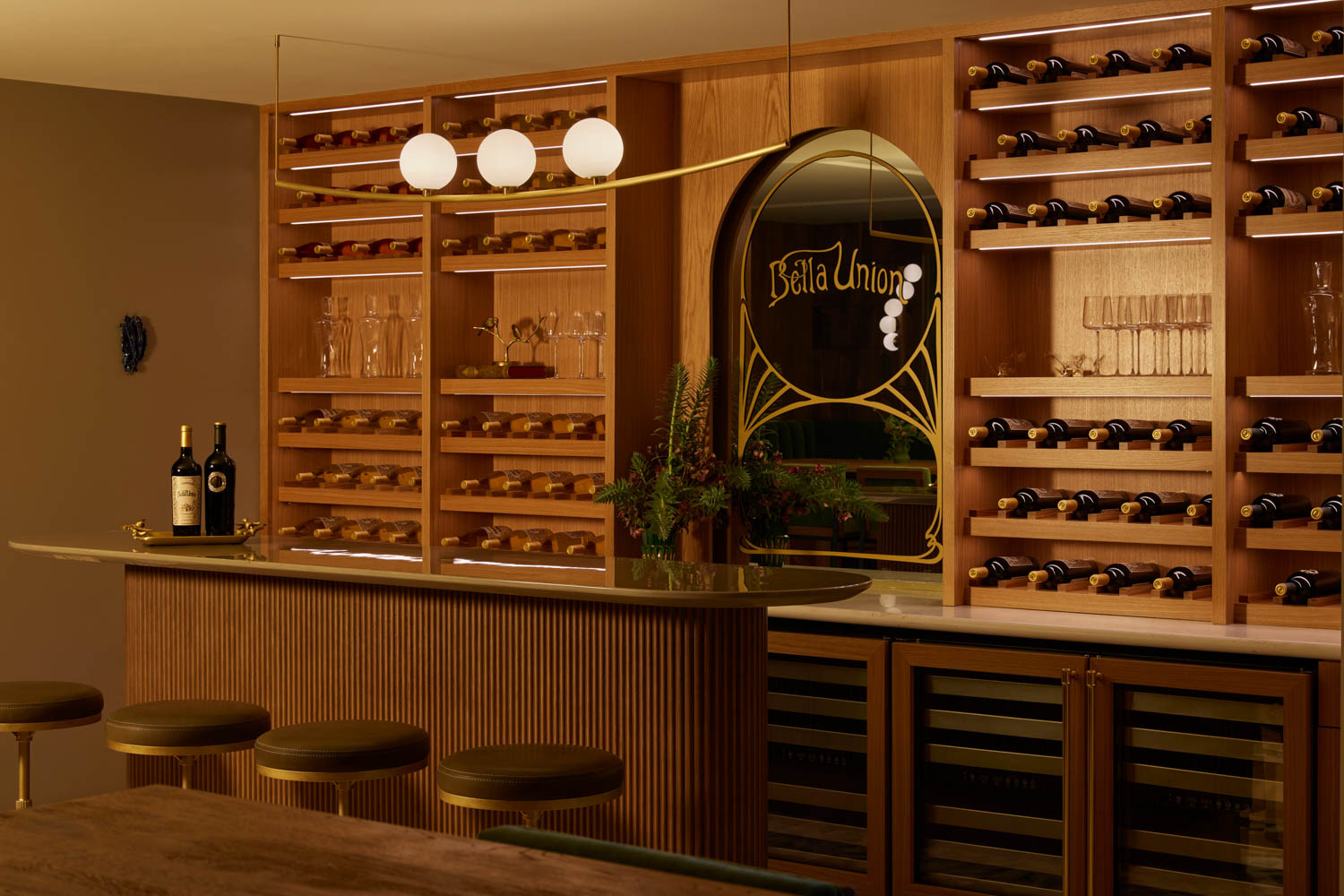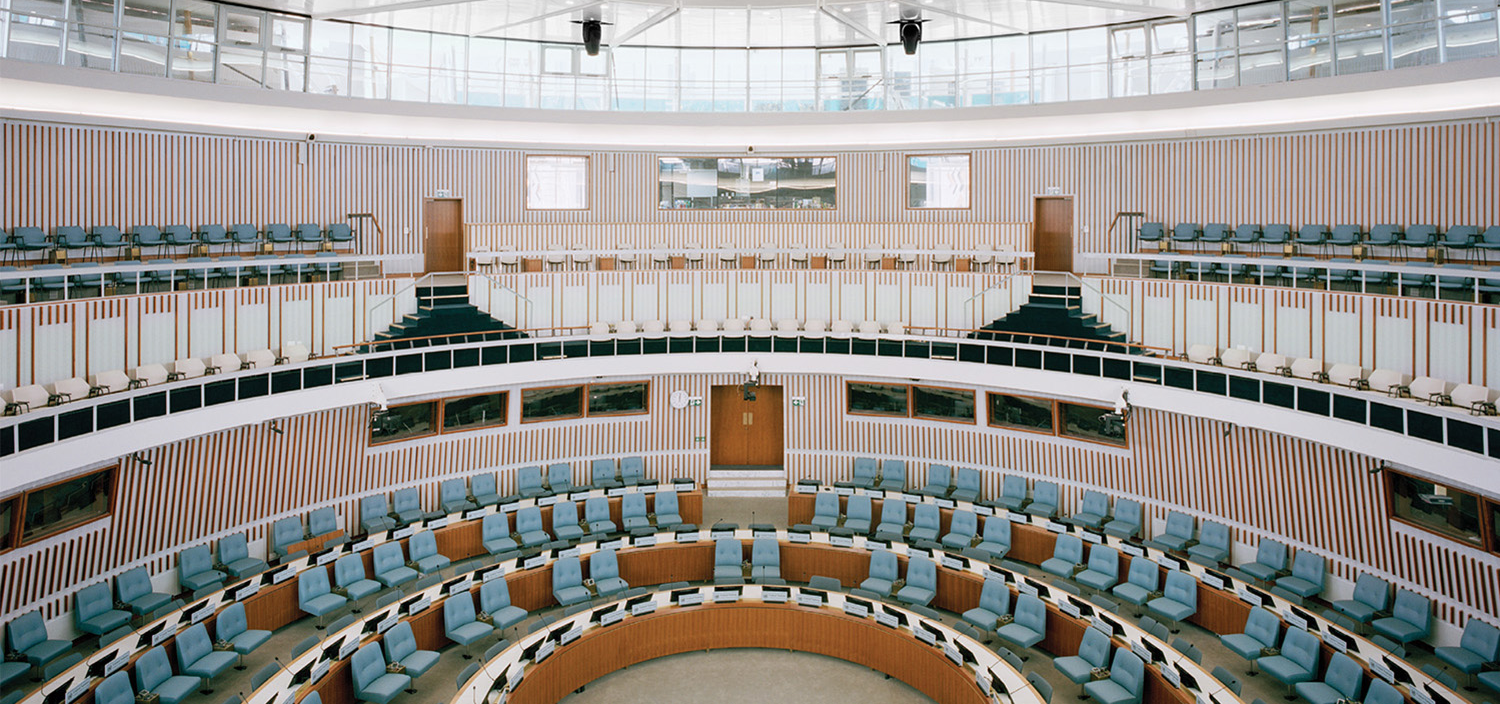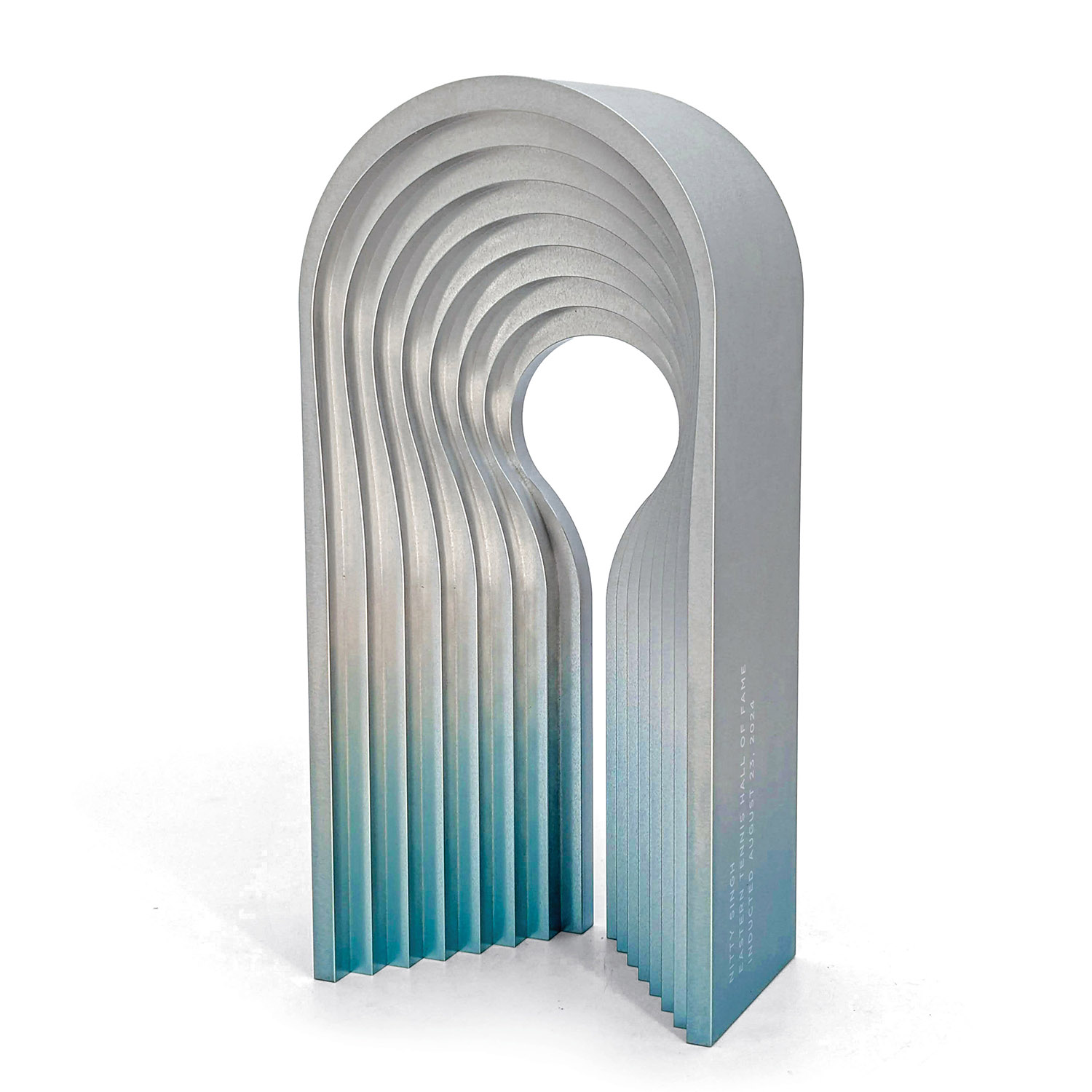Fendi’s Flagship by Peter Marino Brings Italy to Midtown
Celebrating its 90th anniversary, Fendi is not only commemorating decades of Baguette bag mania and kaleidoscopic confections in fur but also looking toward the future. The fashion house just showed its first couture collection, a veritable Noah’s Ark of animal pelts and skins in luxe gradations of black, gold, and neutrals, as well as unveiling the ideal venue for such opulence, on Madison Avenue in Midtown. The flagship was conceived by Interior Design Hall of Fame member Peter Marino, no stranger to the wearing of animal skins himself.
For Peter Marino Architect, building out the flagship meant looking back: past a 25-year-long relationship with the company, past its storied Roman origins, all the way to the dawn of humankind. “We’ve been wearing furs since we were Cro-Magnons, maybe even before,” Marino says. So he began looking for fur references in unexpected locations. “Taking a motorcycle trip across the American West, I went to Petrified Forest National Park and discovered shops that are allowed to harvest the petrified wood,” he continues. “It kind of looks like fur. I thought it would be really far out.” A luminous deep black, the petrified wood now serves as flooring throughout the two-level, 6,300-square-foot space.
While the fur-wood connection is subtle and subjective, the flagship’s facade couldn’t be bolder. “In retail, you have to build a piece of architecture where you don’t need a sign to tell you what the brand is,” he says. Indeed, the encased columns and soaring archways are unmistakably Italian, both in aesthetic and in geography. The travertine marble was mined and laser-cut in Italy, then shipped to New York for assembly. “Columns, arches, travertine, that’s Rome. The Coliseum!” he says, also pointing out the nod to his former New York premises for Fendi. “Three simple marble arches, flat and very tough in the style of the ’90’s—there’s a reference to that story on the outside of the new location.”
The inside was a different scenario. “Beyond a gut renovation,” he says. “A demolition derby.” That left a blank slate on which to deploy a full palette of innovative materials. Besides the petrified wood, they include a nubby, ridged form of stucco. It’s created with mortar and pestle—“mushing gold powder in with the plaster,” he says—and used on display walls for handbags and other leather goods. Walls throughout the ground level, meanwhile, boast a white surface produced by coating strips of canvas in gesso. Wildly tactile, it’s nevertheless perfectly understated in contrast to another Marino invention: Like gold lamé fed through a shredder, a shaggy substance composed of brown and gold strips of cast-off leather emerges from the wall. “It’s just insane,” he says. “Demented.” It’s certainly an unmissable backdrop for Fendi’s latest Baguettes. Other innovations include the shoe salon’s walls lacquered in loose, broad strokes of brown and gold, reading more faux fur than faux bois. “The DNA of Fendi is fur,” he emphasizes. “We developed a lacquer that is furlike in that the color never looks the same way twice. I was going for irregularities.”
A very different kind of irregular treatment swaths the upstairs fitting room. Stretching white canvas over pencillike rods, sticking out of the wall behind, creates undulating points and dimples or peaks and valleys, all light and shade. He calls the effect “a nod to Achille Castiglioni,” whose achievements were concurrent with Fendi’s “explosion of modernity,” when Karl Lagerfeld began designing for the house in 1965. The door of the fitting room swings open to reveal a striking black-and-white photograph of the head of a Roman statue badly damaged over the millennia. “It captures that feeling of an empire reaching great heights of art, before the fall,” he says. “That’s sort of a commentary.” Fendi’s empire, however, shows no sign of falling. The Madison Avenue venture is Marino’s fourth collaboration with the company. In fact, he designed its very first U.S. in-store boutique, a 15-by-20-foot space at Barneys New York. He recalls “caramel-color wood, super-cool arches, and floating white marble shelves.” He updated those shelves for the latest Fendi and filled its upstairs ready-to-wear and fur salons with a survey of the last century of design, ranging from Otto Schultz lounge chairs, circa 1915, to Gio Ponti seating, mid-century, and a curvy Jacques Jarrige floor lamp in carved ash, 2013.
Most spectacular is the staircase, with its steps in petrified wood, balustrade in Brazilian rosewood veneer, and handrails wrapped in chestnut-colored leather. Even more eye-popping, a standout in an environment chockablock with outrageous ideas, is the tapestry hung on the stair landing. An enormous patchwork of Fendi fur samples, dozens of patterns and colors and textures, both known and unknown to nature, are all cut into triangles for maximum geometric impact. It’s one part flip-book of technical achievements, one part teaser of coming attractions.
Project Team
Marco Marcellini; Hassoun Molavi; Paola Pretto; Xu Zhou; Estelle Courand; Jennifer Fitzgerald; Amy Raiter: Peter Marino Architect. Design Republic: Architect Of Record. L’observatoire International: Lighting Consultant. Severud Associates: Structural Engineer. Rosini Engineering: Mechanical Engineer. Sice Previt: Woodwork. Stone Truss Systems; Tia Marble & Granite: Stonework. Americon Construction: General Contractor.


